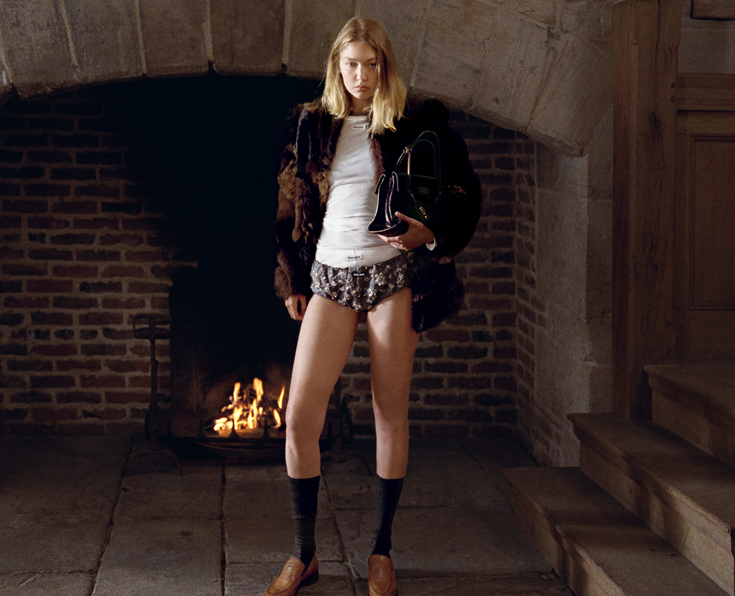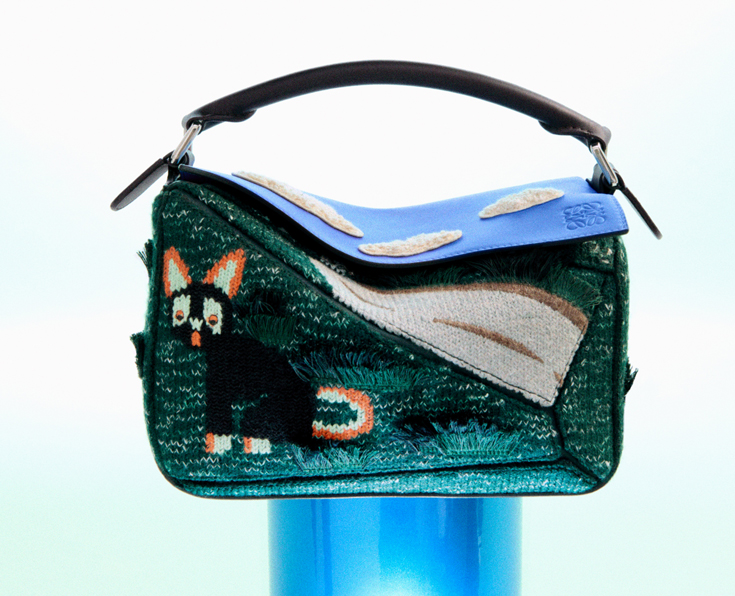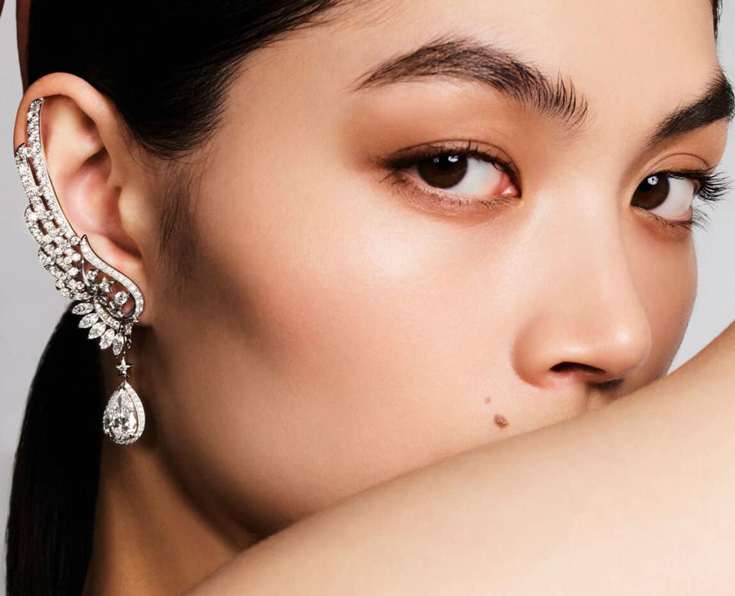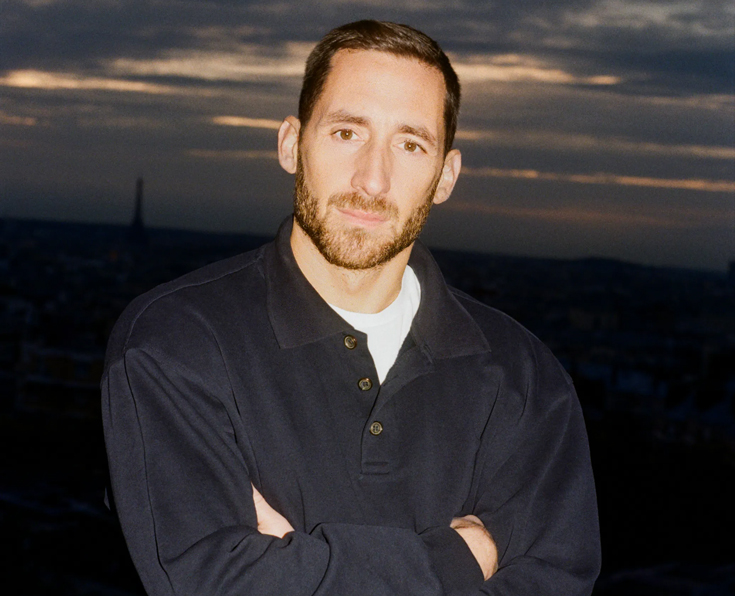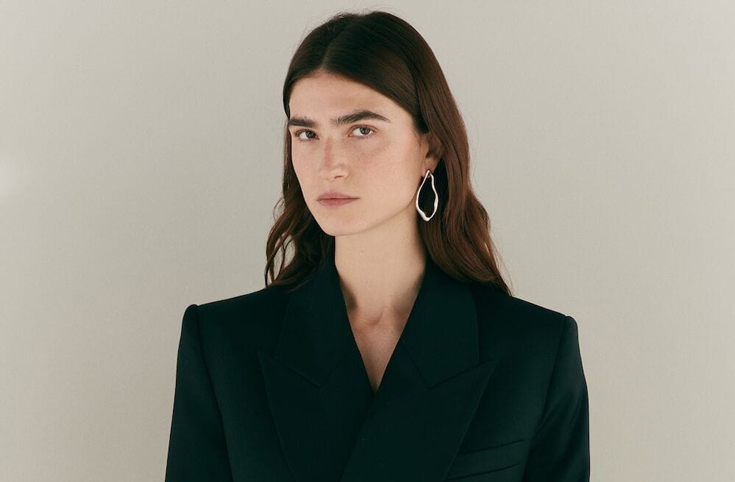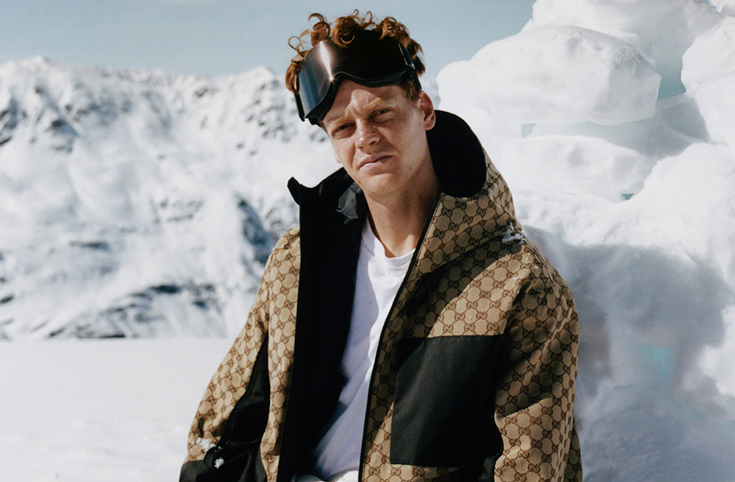TAKE A TRIP TO LONDON’S SKATE SCENE

A woman stands in the Sahara Desert along the 4000-mile route across Morocco used by drug smugglers in the 1970s, her tasselled poncho billows in the simoon winds. A shirtless man stares crazy-eyed into the camera, a spoonful of breakfast oats in one hand and a menacing steak knife in the other. A friend flips off the camera while hooked up to a heap of hospital wires inside an ambulance. These are just a few of the candid moments eternalized by James Edson in his first-ever photobook, a swirling, monochromatic retrospective dubbed Rabbit Hole.
For over 25 years Edson, a founding member of London skateboarding collective Palace Wayward Boys Choir (PWBC) and of the defunct Wayward Gallery, has had a camera in his camp, constantly capturing fellow skaters, family members and friends – many of who are members of PWBC – in flux. Edson immortalises those fleeting moments in black and white using a wide, 55mm Pentax 67 most often, or some old Yashicas and dated point and shoot or medium format cameras. It’s easy to imagine, then, the plethora of forgotten photos that dwell in his archives.
In rifling through those old photos, prints and negatives which had laid forsaken for the better part of a quarter-century, Edson’s mind went on a wander and soon, fell down a rabbit hole, plunging deeper and deeper into an archive which constitutes thousands of analogue images. The result is 146 photobook pages, produced by MPK Studio, that span youth culture, community and serendipity and arrive bound by a glossy black hardcover with an adorable, loose sketch of a rabbit by artist and friend John Knight on its exterior. From one double-page spread to another, digitally scanned risograph prints rotate by 45 degrees, twisting with each every turn of the page and revolving slowly so when properly viewed it feels like you’re going, quite literally, down the rabbit hole. Skater and writer Stuart Hammond, a longtime friend of Edson’s and PWBC co-founder, writes in the forward: “Inside the vortex, swirling and looping darkly down; all these beautiful/gnarly images, so often so love-loaded, from the days and nights of Edson’s life… Lots of travel, lots of friends, lots of street life, lots of caning it tbh: these are the things that we see down the rabbit hole of ‘Rabbit Hole’… Hectic situations: a lot of blur, smoke, mirrors, lines, booze, agony and ecstasy, D Double E on the mic, Morph eating a pizza topped with chips. Round and round we go.”
Since dropping out of college to voyage across the world with friends, casually photographing the rich culture that surrounds skateboarding along the way, Edson has been producing zines like Persian Rugs and has collaborated with Daniel ‘Snowy’ Kinloch and Samuel Stamper on a number of art shows including Batfood (2015), Ramblings In The Wild (2020), and It’s Like Bradford In The 80s (2017). He has also delved into various editorial commercial projects for publications such as Dazed, i-D and The Face and labels like Nike SB, Palace and Bandcamp. Edson’s retrospective of long-time Palace skater Lucien Clarke for Supra is a project to note, with one of its elusive images having wormed its way into Rabbit Hole.
Alongside the book, the launch includes limited-edition t-shirts, tote bags, and “crazy cool” reversible blankets by Palace all plastered with Knight’s Rabbit sketch, which were unveiled at an invite-only event held at the Institute of Contemporary Arts (ICA), London’s leading space for contemporary culture, on August 3. Prior to the launch at the ICA, Edson said in a press release that he had been feeling “quite terrified by the whole thing,” but by the time of our conversation, he had turned that apprehension into assured excitement. “I feel really good, slightly overwhelmed and I’ve had a few wobbles, but just the right amount [of them]. Everything is falling into place.”
He’s in Sheffield at his mum’s house taking a breather from the scramble of London life when we chat, spending his days walking the family dog and “looking into far distances” instead. His tenor is warm and humble – Edson is rather irresolute to receive any sort of flattery – as he takes me on a journey down his very own rabbit hole.
Can you tell us about the first time you skated, if you can recall, and how you first got into it?
Edson: “That was probably around 1988. It would have been in Sheffield where I’m from, probably just on my cousin’s old boards that I found in the garage – one of those little ‘70s kind of things. I was inspired by local kids around my area; kids who had big trousers on them, bleach-blonde hair and bum bags in the North of England.”
PWBC (Palace Wayward Boys Choir) is now synonymous with a whole movement of British skate culture and style, but can you talk about the early years of PWBC and how you all came together?
Edson: “The under crop under the Wayward Gallery – which everyone there knows – used to be a different-looking place. There was no graffiti, no actual skate obstacles; it was just a really smooth floor and quite a beautiful place actually – quite amazing. We all kind of gathered there randomly and became friends and ended up living together. Then we kind of graduated to Southbank and just carried on from there.”
PWBC has been described as taking a more DIY, real and raw approach to its depictions of skate culture in the UK. Would you describe your personal photography style to be of similar vein? What defines your style?
Edson: “DIY kind of runs through skateboarding anyways. [For] as long as I remember everyone’s always sort of adapted – buying clothes, building ramps or skateable things in a car park. There’s always been a DIY culture attached to it, before the term was around even. So in relation to my photography, it definitely runs into that as well because I just like to use whatever I have at the time being and it’s more about whatever is actually going on [in that moment] than the actual equipment – I like to capture moments. Even though a lot of my stuff would be [considered] portraits, it’s usually someone doing something silly or whatever and then I take a picture of it. It comes across like portraiture, but nothing is staged.”
Can you describe what’s going on in the following images: the one of a guy in an ambulance?
Edson: “That was my good friend Dan Emmerson. We were out skating one day and I think he had a pretty late night before and we just turned around and he had a seizure on the floor. It was probably one of the most horrific things I’ve witnessed in my life, to be honest. I didn’t really worry about putting it in the book but it was not a good memory. It was a very intense day or two. Obviously, he’s completely fine now but yeah, that was the story behind that one. He just literally fell down some stairs. His head was bleeding out. And he was shaking on the floor and we had to get an ambulance; it just came out of nowhere. That was right behind the National Portrait Gallery.”

The one of a guy praying beside an upside down cross?
Edson: “The upside-down cross came from a show me and Snowy (Daniel Kinloch) did in Berlin together quite a long time ago. We basically just went three days before the show opened, so you can imagine what happened by the time the show actually opened given Berlin’s nightlife… I found these gold postcards in a shop and made the upside-down cross out of them to hang in the doorway with tape for absolutely no reason whatsoever. In the photo, that was a guy from Walthamstow who’s a rapper. The photo wasn’t taken in Berlin, but I think I had it on my wall here just to sort of remind me of what not to do ever again. And then one night he did that in front of it and I took a photo of it. That’s about it; there isn’t some great and deep meaning behind it; but it was a bit of a weird thing to do.”

The one of the guy with his eyes rolled back in his head in front of those ancient stone statues?
Edson: “That’s my friend Nathan. I think he’s just imitating the statue. Basically, it’s outside Brunswick House or something like that. He was literally just pretending to be one of the statues outside and he’s just this massive black guy so it was kind of cool, obviously, against these white porcelain statues. It’s so clearly just in the moment.”

You have over a quarter of a century of photos here and there are 146 pages, so what was your deciding factor for which images made the final book?
Edson: “When I started to make the book, it was through a guy, an MPK studio guy who got in touch with me basically. He’s called Matt and he’s an amazing guy. So Matt designed the book; he put it all together and did the art, the spine and the font and stuff. We worked on the layout together for over a year, day in and day out, but there’s a time difference because he’s [based] in Melbourne, so we’ve never actually met; we just did phone calls at six in the morning for like eight months. Anyways, he got in touch with me and we had the intention to shoot some of the stuff that he makes, like scarves and stuff. We ended up not doing that, but he also publishes zines and things so he was like, ‘Do you want to make a book?’ I was like, ‘let’s go!’ and then I started trawling through stuff expecting it to be maybe 40 pages – just a little paperback – but it just carried on and on and on. I couldn’t really stop doing it because there was so much stuff that I needed to put in there which I hadn’t looked at for years. It just became this impossible marathon of just trawling through shit. It became quite heart-wrenching actually; there were so many people I haven’t seen [in ages], people that have passed away, people who I don’t know anymore, or people I’ve spent a really good time with but don’t see anymore. Even talking about this, it’s quite grounding in a way, it’s quite weird. I think it made me want to put the camera down for a bit just because I think I sort of took for granted the evocativeness of the feelings photography can create. I’ve just snapped photos and I’ve thought about what I’m shooting but the actual sort of context of it is quite mental.”
In the past you have displayed your work as zines and exhibitions like Persian Rugs. Why did you choose to release your work in this format this time around?
Edson: “I think it just progressed into a book because there was so much work needed to go in there. After doing quite a lot of zines and then not having done one in like six-odd-years, it seemed like I was backpedaling a little bit. But also, I’d just discovered so many images that I hadn’t seen for such a long time and I was like, ‘I can’t not put that in!’ Then the ones that I couldn’t not put in, turned into 100 or more. There are still ones I would like to put in, obviously.”
Can you speak a bit about your choice to rotate the images by 45 degrees with each page so when properly viewed, the book will have its reader slowly revolving the object, giving the sensation of going down the ‘rabbit hole’? What does the concept of the ‘rabbit hole’ mean to you and how does it resonate with your work here?
Edson: “That was actually Matt’s idea. We went back and forth on it for a while because we thought, ‘Oh, are we just going to confuse people if they turn the page and the next image is upside down?’ But then we put it past a couple of people and they were like ‘No, that’s a fucking great idea. Do it.’
“The process of going through old photos felt like a void. I had them all laid out on the floor. A lot of them were just prints and they had to be scanned or I had to find the negatives. It sometimes felt like spiralling into memories and feelings, just sort of spiralling and spiralling through the years. Sometimes it was good, sometimes it was bad. ‘Rabbit hole’ seemed fitting.
“Weirdly, actually, it was John Knight who drew the rabbit for the cover, but that was completely unconnected to the book before. Basically, he sent me a copy of Jarvis Cocker’s book Good Pop, Bad Pop with that [rabbit] drawing inside, and so when I started to make the book, I was like, ‘No way. I’ve got the cover already!’”

Lastly, what does the future hold for you? Do you think you’ll do another book at any point?
Edson: “Yeah maybe. I’m just going to keep going and keep doing what I’m doing and put all this stuff to bed. I think that’s the main thing for me. It feels like drawing a big line in the sand. There’s so much stuff I’ve wanted to do something with for ages, and it’s never really materialized, but to just make another zine feels pointless. So, it feels really good to actually make a book, especially doing it at the ICA. So maybe I’ll just start again.
“I’d like to make something different though. I’d have to think about it. I’m not just going to suddenly start banging out loads of series of this book and be like ‘Oh this works. Let’s go with it.’ I’d like to give it a purpose. This one’s definitely got a purpose, but I don’t really know what it is. It’s just me reflecting and looking back on my life retrospectively.
“Also, I think Matt’s been in touch with some people he knows in Japan who have a gallery. So we’re talking about maybe doing that, which I’d love because I’ve never been. And I guess to see sort of the response after this and see what we can do with it. He wants to do one in Melbourne as well, which I’ve also never been there but I have some friends there and have been meaning to visit for about 20 years. I think maybe try and travel with it a little bit if we can. I don’t know, we’ll see how it goes.”
Photography by James Edson. ‘Rabbit Hole’ and its accompanying lifestyle merchandise is available for purchase via the ICA Bookstore exclusively. Shop here.


